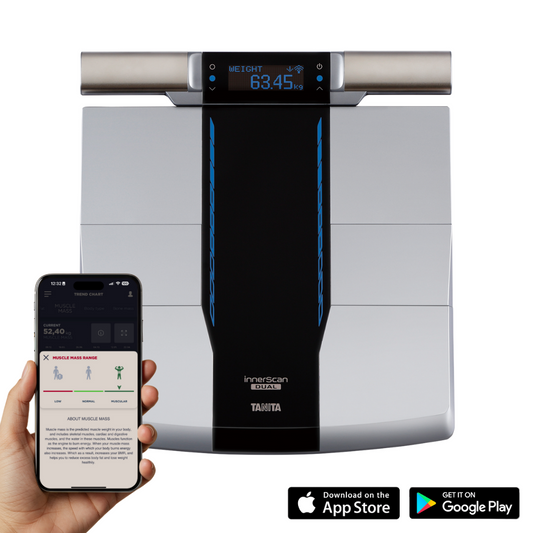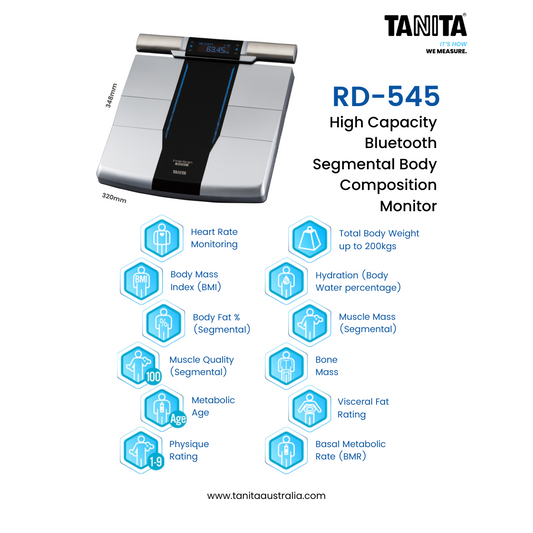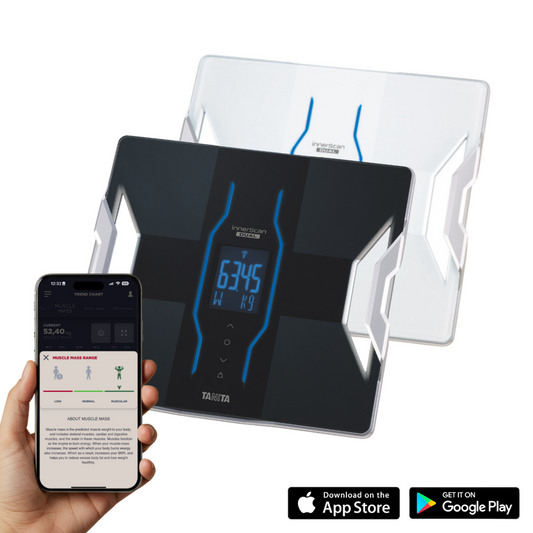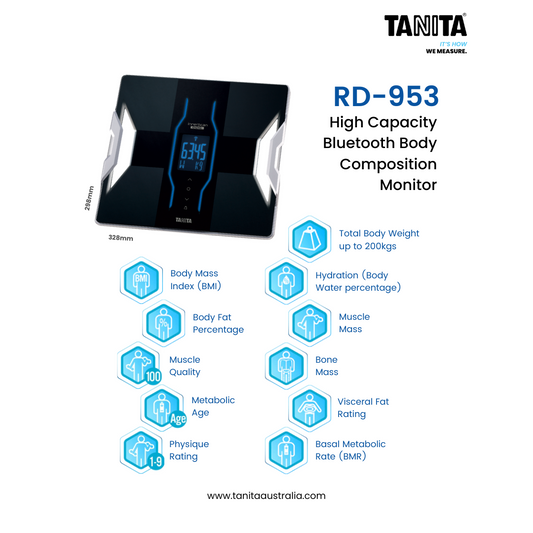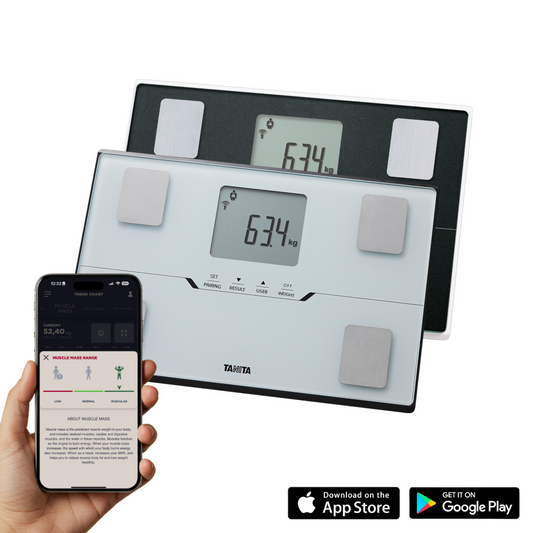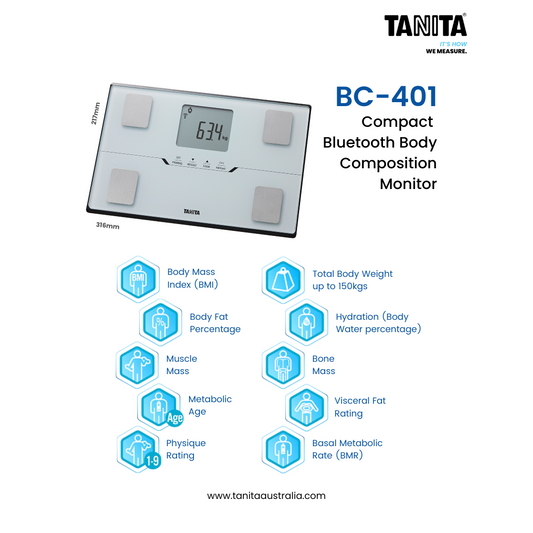Muscle Mass

What is Muscle Mass?
To manage your muscle mass and body fat percentage, it’s important to first understand what these body composition measurements actually mean.
Many people assume that building muscle automatically reduces fat, but while the two can be related, they’re not the same thing.
Muscle mass refers to the total weight of all muscles in your body, including skeletal muscles, smooth muscles like the heart and digestive system, and the water stored in those muscles. These muscles play a crucial role in energy consumption, they act like engines, burning energy even at rest.
On the other hand, body fat percentage measures the proportion of fat in your body. Increasing muscle mass boosts your metabolism, which can lead to fat loss and improved fitness. This also increases your Basal Metabolic Rate (BMR) which is the number of calories your body burns at rest. That’s why tracking muscle mass can be just as important as monitoring fat levels.
Muscle mass includes skeletal and smooth muscle, plus the water stored within. Since muscle tissue is made up of water and protein, it’s essential to include adequate protein in your diet to support muscle development.
How to Gain Muscle Mass
There are some differences in how men and women gain muscle. Men typically have higher testosterone levels, which supports faster muscle growth, but that doesn’t mean women can’t gain strength and size.
Women can achieve significant gains in both power and muscle mass. The training principles are the same for both sexes: consistency, strength training, proper nutrition, and rest.
Building muscle mass doesn’t happen just in the gym, it happens in the kitchen too. Eating the right foods for muscle growth is just as important as training. To build muscle, you need to consume more calories than your body burns, but the quality of those calories also matters.
Start by calculating your Basal Metabolic Rate (BMR). Your BMR tells you how many calories you burn at rest. Aim to eat slightly above that to promote growth. It's important to monitor your results as you increase your intake. If your fat levels rise, reduce your intake. If you’re not gaining muscle, increase it.
While you're making improvements to your diet, health and fitness routines, use a Tanita Body Composition Monitor to track both muscle and fat levels accurately.
When it comes to food:
- Prioritise protein: chicken, turkey, yoghurt, beans, nuts and fish are all great sources.
- Don’t forget complex carbohydrates and healthy fats, your body needs these too.
- Eat a balanced, high-protein diet and avoid excessive junk food.
Other important tips for muscle growth:
- 💧 Stay hydrated by drinking plenty of water
- 🏋️ Follow a structured strength training program
- 🛌 Get 7–9 hours of sleep per night
- ❌ Limit alcohol intake
- 🧘♂️ Reduce stress through mindfulness or relaxation techniques
Everyone builds muscle at a different rate, depending on genetics, age, training experience, and muscle memory. We recommend you speak to your health professional for advice that is best suited to your needs and health journey.
Muscle Balance
As you grow stronger, be mindful of muscle balance. Imbalances happen when certain muscles grow faster than others, like training your chest but not your back. This can lead to poor posture, joint strain, and injury.
Make sure you train opposing muscle groups evenly. A balanced workout routine supports better posture, performance and injury prevention.
How to Measure Muscle Mass
More contractile tissue = better muscle quality.
To improve this, aim to strengthen your muscles and reduce non-contractile tissue (like fat). Strength training exercises help with both.
Even if you're a runner or cardio lover, consider adding resistance training to your routine for optimal results.
Measuring & Tracking Muscle Mass with Tanita
Tanita’s advanced Body Composition Monitors use professional-grade dual-frequency BIA technology to accurately measure your muscle mass. Our segmental Body Composition Monitors track both total and segmental muscle mass, meaning you can see how muscle is distributed across your body.
Traditional bathroom scales won’t show this. You may gain muscle and lose fat, but the number on the scale stays the same. With a Tanita scale, you’ll see the true body composition changes happening beneath the surface.
By tracking your results over time, you can:
- Set realistic health and fitness goals
- Stay motivated with accurate muscle and fat readings
- Identify and correct muscle imbalances
- Track your muscle growth progress
That’s why Tanita is trusted by fitness professionals and health experts worldwide.
Shop Tanita Body Composition Monitors
-
Tanita RD-545 Bluetooth Segmental Body Composition Monitor with Heart Rate Monitor
4.3 / 5.0
(8) 8 total reviews
Regular price $594.15 AUDRegular priceUnit price / per$699.00 AUDSale price $594.15 AUDSold out -
Tanita RD-953 Bluetooth Dual-Frequency Body Composition Monitor
4.2 / 5.0
(10) 10 total reviews
Regular price $339.15 AUDRegular priceUnit price / per$399.00 AUDSale price $339.15 AUDSale -
Tanita BC-401 Compact Bluetooth Body Composition Monitor
4.1 / 5.0
(19) 19 total reviews
Regular price $169.15 AUDRegular priceUnit price / per$199.00 AUDSale price $169.15 AUDSale

